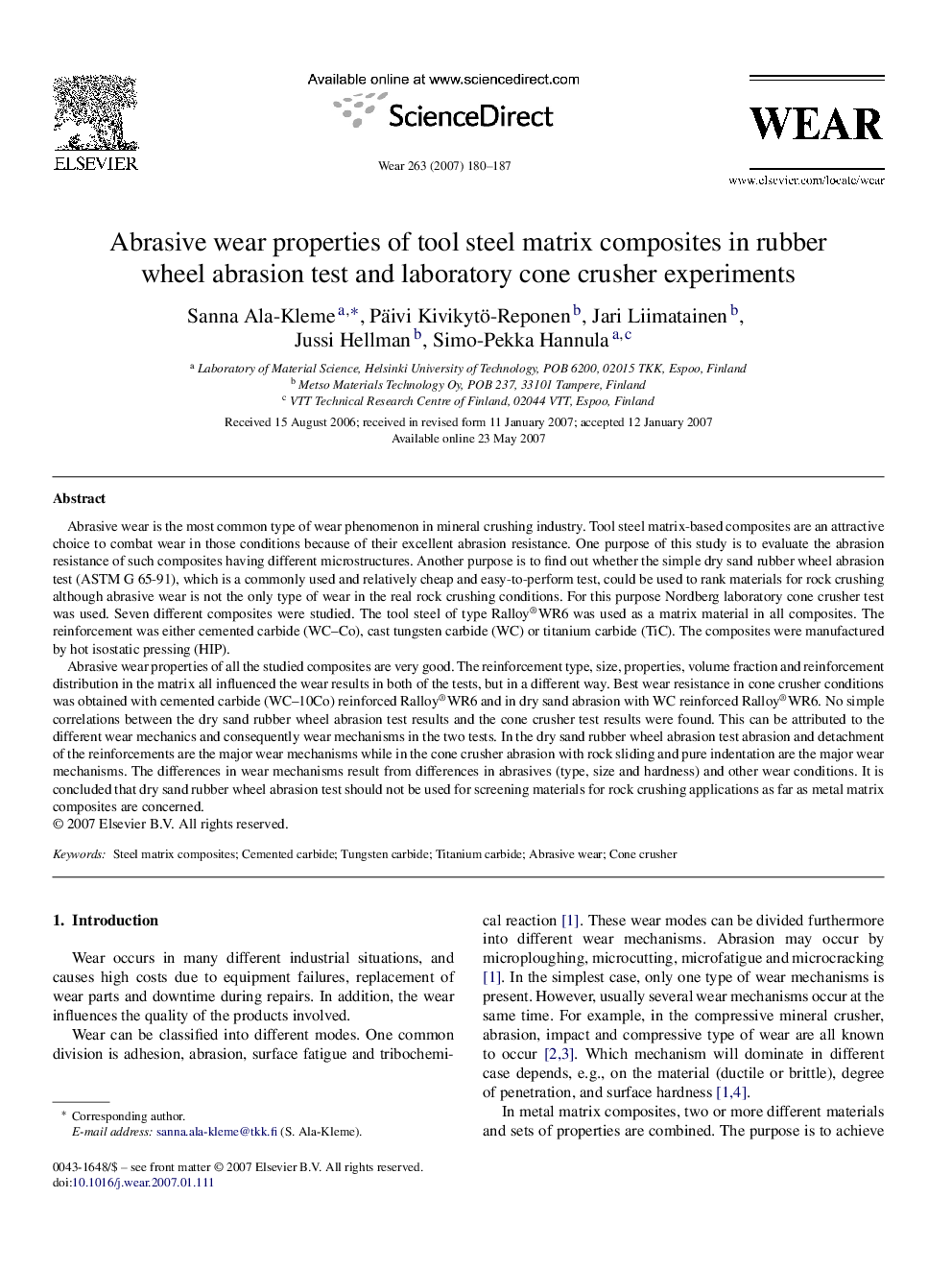| Article ID | Journal | Published Year | Pages | File Type |
|---|---|---|---|---|
| 619813 | Wear | 2007 | 8 Pages |
Abstract
Abrasive wear properties of all the studied composites are very good. The reinforcement type, size, properties, volume fraction and reinforcement distribution in the matrix all influenced the wear results in both of the tests, but in a different way. Best wear resistance in cone crusher conditions was obtained with cemented carbide (WC-10Co) reinforced Ralloy®WR6 and in dry sand abrasion with WC reinforced Ralloy®WR6. No simple correlations between the dry sand rubber wheel abrasion test results and the cone crusher test results were found. This can be attributed to the different wear mechanics and consequently wear mechanisms in the two tests. In the dry sand rubber wheel abrasion test abrasion and detachment of the reinforcements are the major wear mechanisms while in the cone crusher abrasion with rock sliding and pure indentation are the major wear mechanisms. The differences in wear mechanisms result from differences in abrasives (type, size and hardness) and other wear conditions. It is concluded that dry sand rubber wheel abrasion test should not be used for screening materials for rock crushing applications as far as metal matrix composites are concerned.
Keywords
Related Topics
Physical Sciences and Engineering
Chemical Engineering
Colloid and Surface Chemistry
Authors
Sanna Ala-Kleme, Päivi Kivikytö-Reponen, Jari Liimatainen, Jussi Hellman, Simo-Pekka Hannula,
